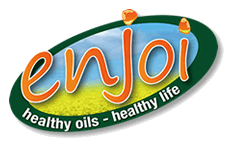
What is Trans Fats?
Chemical Difference
Trans fats are fats with trans fatty acids - unsaturated fatty acids with trans- rather than normal cis- configuration.
Take three common 18 carbon fatty acids as examples:
-
Stearic acid is a saturated fatty acid, it has no double bond, regular zig zag carbon chain structure.
-
Elaidic acid is trans unsaturated fatty acid, it has 1 trans double bond, in which the hydrogen atoms connected to the two double bond carbons are in opposite side, resulting in a overall regular zig zag carbon chain structure.
-
Oleic acid is a cis unsaturated fatty acid, it also has 1 cis double bond, hydrogen atoms are arranged in same side hence the long chain is blended instead of regular zig zag.

The similarity in structure of trans fatty acids with saturated fatty acids give them similar properties such as higher chemical stability (longer shelf life, higher flavour stability) and higher melting point (semi-solid texture).
Melting points of these fatty acids are:
-
Stearic acid = 70°C
-
Elaidic acid = 42°C
-
Oleic acid = -5°C
Before knowing the damage it brings to our body, these properties is once desired for replacing animal fats or butter in snacks and saturated frying oil such as palm oil.
Where does trans fats come from?
Major process to generate trans fats in our diet is called partial hydrogenation. It is the use of hydrogen gas and metal catalysts to reduce number of double bonds in fatty acids, change unsaturated fatty acid to saturated fatty acid, however trans fats are formed as by-product (See picture below). The process gives partial hydrogenated oils (PHOs) the properties mentioned previously and it is used since 1980s to produce margarine, shortening, butter until the studies revealed harmful effects of trans fats, since then new generation of these solid fats is mainly made by interesterification.

There are also natural sources of trans fats. Microorganisms in ruminant animals such as cow, sheep and goat, can also produce trans fats through bio-hydrogenation. Studies found that these natural trans fats do not cause harmful effects like artificial trans fats do.
Health Risks of Trans Fats
Excessive trans fats in the diet is a significant risk factor for cardiovascular diseases such as blood vessel hardening (atherosclerosis) and coronary heart disease.
Trans fats exerts its effect on the balance of the blood cholesterol levels, more specifically lower level of high density lipoprotein (HDL) and higher level of low density lipoprotein (LDL). These lipoproteins are responsible for transferring hydrophobic molecules (e.g. fats and cholesterol) from place to place in our body through the blood circulation. HDL contains less fats/cholesterol and it may takes up these fats/cholesterol from blood vessels and organs, and LDL contains more fats/cholesterol which may release it to blood vessels and organs, therefore HDL and LDL are often referred as "Good" and "Bad" Cholesterol respectively.
Saturated fats also increase LDL level but it will not affect HDL level hence trans fats is more dangerous than saturated fats.
Will cooking induce production of trans fats?
Some studies proposed that heating may induce trans fats production, especially during high temperature (near smoke point or above), prolonged heating (>120 minutes), under sunlight and oxygen rich (normal air flow). The formation of oil oxidation intermediates will accelerate the trans fats production. While some other studies suggested under normal cooking conditions the amount of trans fats produced is negligible.
You may want to avoid trans fats and more importantly oil oxidation by not using extreme conditions mentioned above. Try to minimise cooking temperature and time used, and use good quality with higher smoke point, particularly for restaurant that have smaller fryer (more exposure to air) and need heat the frying oil for long time. Actually consumers should be aware of oil oxidation during cooking since oxidation can be easily take place.
What can consumers do?
Enjoi suggests our consumers to first select food and oil with no trans fats. Most countries require trans fats list on the nutritional label, but the tricky thing is that trans fats level below certain levels can be lablled as "0" trans fats, for instance:
-
United States: below 0.5g/serving
-
Canada: below 0.2g/serving
-
Europe: below 0.5g/100g or 100ml
-
Hong Kong: below 0.3g/100g or 100ml
Food experts from FDA suggests consumer should also take a look at the ingredients list, if there is any partially hydrogenated oil, hydrogenated vegetable oils, shortening, there is higher chance of having trans fats if any of those are on the list. Selecting products with small amounts of trans fats can build up to high in take in diet.
Reference:
Changes of Sunflower Oil Polyenoic Fatty Acids under High Temperatures - Agriculture Journal
Scientist unlock how trans fats harm arteries - Food Navigator
Formation of trans fats during food preparation. - Przybylski O, Aladedunye FA.
FDA orders food manufacturers to stop using trans fat within three years - CNN Edition

